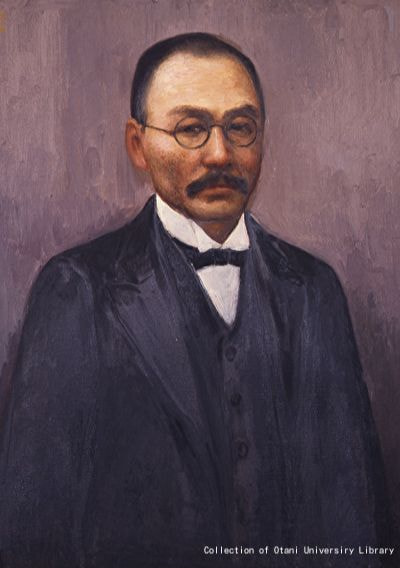About the society


The Eastern Buddhist Society (EBS) was founded in 1921 by D. T. Suzuki, Beatrice Lane Suzuki, Sasaki Gessho, Akanuma Chizen, and Yamabe Shugaku for the purpose of relaying the true spirit of Buddhism to the modern world.
In order to fulfill this aim, the Society has undertaken a wide range of projects, focused on the translation of and research into Buddhist texts, along with the publication of the journal, The Eastern Buddhist.
In the decades since its formation, the Society has remained devoted to the critical study and clarification of the Buddhist doctrine as a living religious tradition.
In addition to the publication of the journal, the Society continues to hold seminars, lectures, and study groups on a regular basis.
Daisetsu T. Suzuki (1870-1966), widely known for his studies on Zen and Buddhist thought, was born in Kanazawa in Ishikawa prefecture.
He enrolled in Tokyo Imperial University and practiced Zen meditation under Imakita Kōsen and Shaku Sōen at Engakuji in Kamakura.
Suzuki received the lay Buddhist name Daisetsu from the latter monk.
From 1897 to 1908, Suzuki worked for Paul Carus’ Open Court Publishing Company in La Salle, Illinois, where he translated several Chinese and Buddhist works and published his first book in English, Outlines of Mahayana Buddhism (1907).
Upon his return to Japan, Suzuki became a professor of Gakushūin University but moved to Kyoto in 1921 to become a professor at Otani University.
When The Eastern Buddhist Society was founded in 1921, he and his wife, Beatrice Lane Suzuki, served as the main editors of the society’s journal, The Eastern Buddhist.
After World War Two, he travelled widely in the United States and Europe lecturing on Zen and Buddhism. A prolific writer, he has written about a hundred books, about a third of them in English.
Beatrice Lane Suzuki (1878-1939) was born in Boston, Massachusetts.
She studied at Radcliffe College and later did graduate work at Columbia University, where she became interested in Eastern philosophies. It was while she was at Columbia that Beatrice met Suzuki, who was in New York interpreting for Shaku Sōen during the latter’s speaking tour in America.
In 1911, Beatrice left for Japan and married Suzuki in Yokohama. After Suzuki moved to Otani University in 1921, Beatrice also began to teach English at the same university.
It may also be noted that she had a strong love for animals and built one of Japan’s first animal shelters.
She also wrote widely on Buddhism. Her works include Mahayana Buddhism (1938) and a number of articles published in The Eastern Buddhist under her lay Buddhist name Seiren (Blue Lotus Flower).
Sasaki Gesshō (1875-1926) was born as the son of Yamada Saisō, a priest of a Shin Buddhist temple located in Anjō city in Mikawa (now part of Aichi prefecture).
He changed his surname when he was adopted by the Sasaki family. Sasaki was one of the closest disciples of Kiyozawa Manshi (1863-1903), a major figure in the modernization of Shin Buddhism during the Meiji period.
Sasaki was appointed a professor of Shinshū University (the forerunner of Otani University) in 1905 and became its third president in 1924.
He was instrumental in inviting Suzuki to Kyoto and played a central role in the establishment of The Eastern Buddhist Society.
Sasaki wrote a number of works on Mahāyāna Buddhist thought, especially Kegon Buddhism, as well as studies on Shinran’s life and thought.